

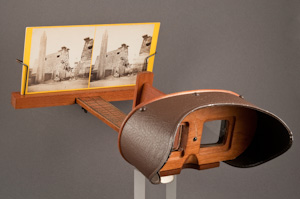
Virtual reality was solidly established in the mid 19th century as a tool for entertainment and education, producing a corpus of millions of images preserved today as photographic stereoviews suited to digital presentation. Stereographic drawings and viewers capable of true 3D presentation were invented in 1838 by Sir Charles Wheatstone, quickly adapted in the following decade to use with photographic images. Initially these were limited to unique formats such as the daguerreotype, and expensive binocular viewers plagued by distracting reflections and poor optics. In 1868 the American writer Oliver Wendell Holmes invented a cheap hand held viewing device for mass produced side-by-side stereo albumen prints capturing independent left and right perspectives. These eye-popping three dimensional scenes were a common photographic format throughout the mid-19th century, when stacks of stereocards and a companion viewer populated most middle class American and European parlors. Commercial production of glass and card mounted original silver photographic prints became a big business, with many publishers issuing catalogs of thousands of images. Armchair travel to foreign locations (European grand tour, Egypt, Africa, Asia) , portraits of famous people (politicians, scientists, entertainers), capture of historic events (wars, exhibitions, public gatherings), and documentation of lost ways of life (Victorian Europe and colonial peoples) are but a few of the many topics represented. Images were initially purchased individually for private consumption, but later (by 1880) packaged into sets of 50-300 annotated scenes intended to recreate an entire journey or explain a thematic subject. "Boxed sets" devoted to specific countries or industries were crafted for educational use in schools and libraries, where they became common immersive experiences for entire classrooms of stereoscope-equipped children who listened to scene descriptions read by their teachers.
Visual media flattened back to 2 dimensions after WWI, when 2D color photography, movies, and television replaced the stereoscope. Carefully assembled stereoview groupings were destroyed or dispersed as libraries deaccessioned their collections and original Victorian collectors died off. Despite such losses, the sheer bulk of production ensured survival of a representative body of material which is a unique resource awaiting rediscovery by the public, scholars, and educators today.
New viewing technologies have the capacity to redeliver these snapshots of a lost world to individuals at 3d-enabled workstations, and groups interacting in a classroom environment. This may be accomplished with unaltered original images, or through their application as photographic scaffolds or wallpaper for objects within computer derived virtual models.
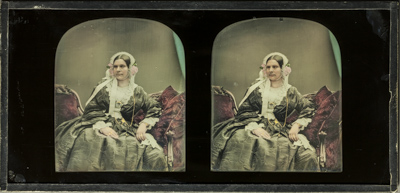

Silver coating on a copper plate, polished to a mirrorlike finish, is the foundation for this toxic process that creates light sensitivity with mercury fumes. Each is one of a kind, as there is no negative. This results in a positive image that flashes with incredible detail when held in the hand and moved to precise reflection of ambient light. This example by Antoine Claudet of London, was skillfully hand colored c.1852-60.

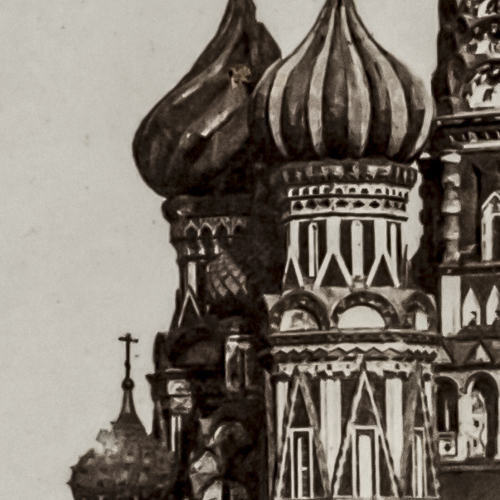
Salt prints are positive paper prints on a thin photographic paper sensitized by silver nitrate. It was the first true negative process, with the primary camera exposure made using similarly sensitized translucent paper that was cleared after development by impregnating with wax. The waxed paper negatives contributed a subtle softness to the resultant prints, many of which could be made ("published") from a single negative. Salt prints can be difficult to recognize because the textural features of the image can be subtle, and not all have suffered the extreme fading charasteric of the format. This one is unusually bright. St. Basil cathedral in Moscow, Russia. Photographer is Zuccalmaglio, 1850-60.
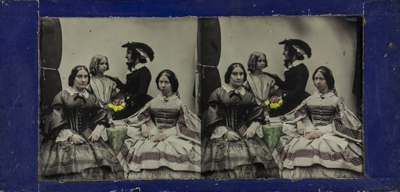
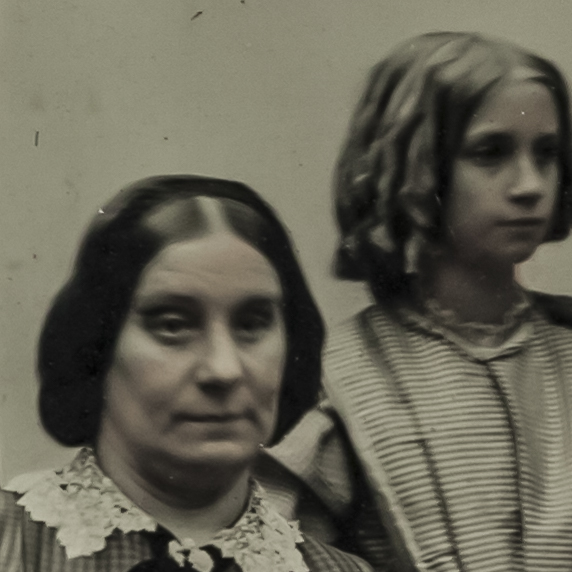
Ambrotypes are closely related to tintypes, the difference being that ambrotypes were printed on glass instead of metal. The positive image requires a dark foundation, created by use of ruby or obsidian glass, or clear glass with a black cloth or paper backing. Exposures could be slow, blurring the subjects. c.1855-7.
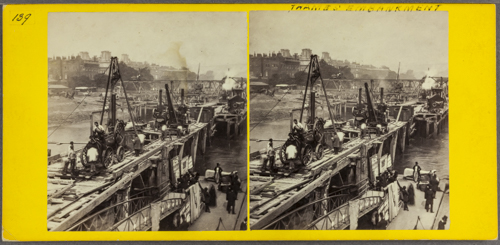
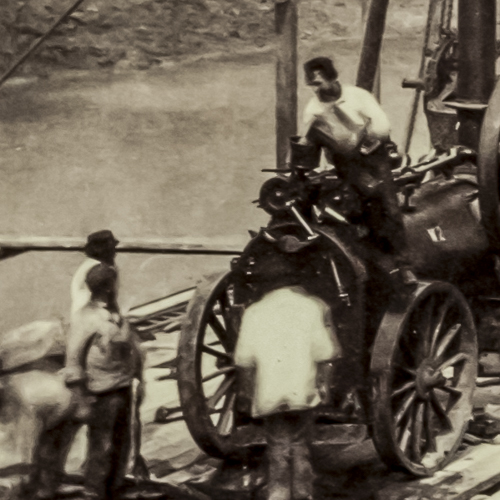 Paper View (Wet Plate Albumen prints)
Paper View (Wet Plate Albumen prints) An early, common, stereophotograph format, a silver emulsion photographic print made from a wet photographic plate prepared and developed in the field. Light sensitivity was lost if the negative dried before exposure. Sometimes the mount is brightly glazed, with ornate printed decoration. Individual photos may be rectangular, or sometimes have an arched top like a window. The flat card is brightly glazed. Individual photos may be rectangular, or sometimes have an arched top like a window. After approximately 1875 the cards were heavier and made of special curved stock which when seen in a stereoscope increased the 3d effect. Detail shows excellent contrast and detail, with moving subjects blurred during the long exposure. Thames embankment, London, c.1860.
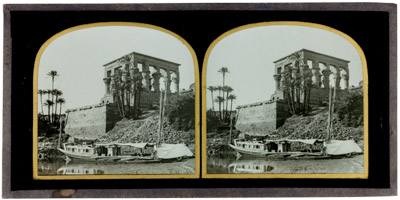
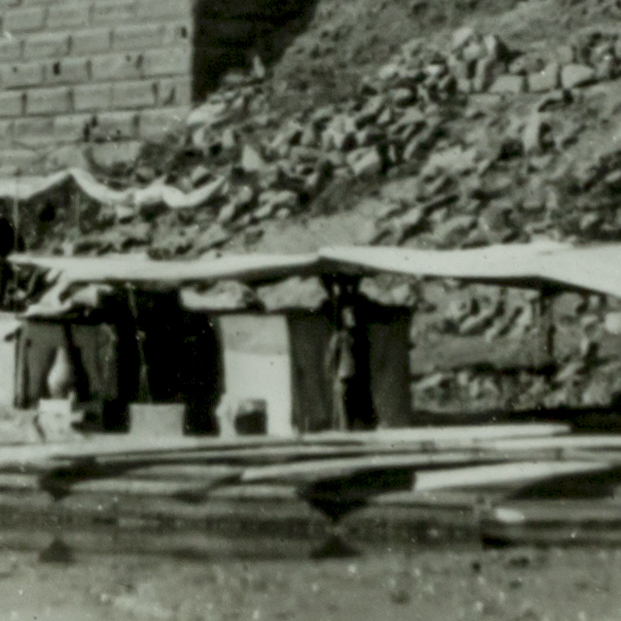
Fragile, expensive, and stunning! Glass is coated with a photographic emulsion and the image backlit for viewing. Perhaps because of the expense, these were always carefully prepared with resultant excellent tonal range and microscopic detail unencumbered by paper texture. Peak popularity is early, from 1855-1870. Philae Island on the Nile, Egypt. Francis Frith, 1857.
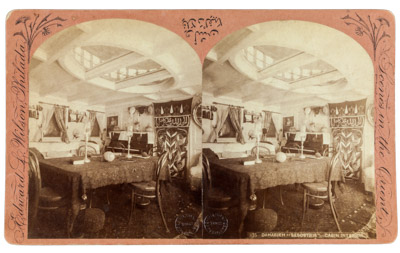
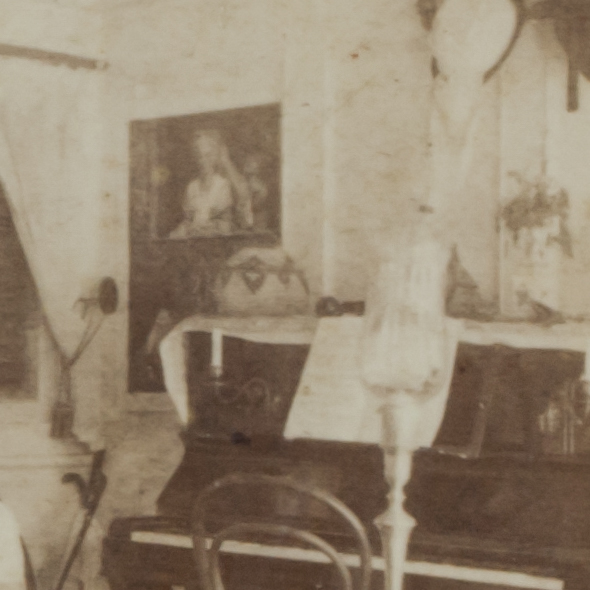
This is a silver emulsion photographic print mounted on a curved ornately printed stiff card with orientilizing motifs evocative of their Egyptian subject. The photographer, EL Wilson, has printed his name in Arabic at the top center - not recognizing or caring that it was upside down! After approximately 1875 cards were heavier and made of special curved stock which when seen in a stereoscope increased the 3d effect. This print was made from sensitised and exposure-ready early American commercial dry glass plates carried across the Atlantic and during a prolonged middle east tour before being developed back in the US months later. This spared the photographer from a need for a portable darkroom in the field, permitting a more spontaneous approach to on-the-fly street and people scenes that Wilson is known for. The drawback of these dry plates was soft contrast and fading which worsened with delays of travel. Interior sitting room of photographers Nile dahibeyah "Sesostris". EL Wilson, Philadelphia, c.1882.
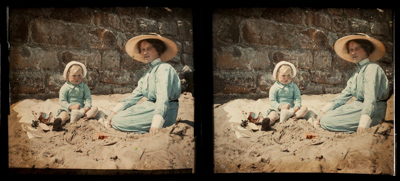
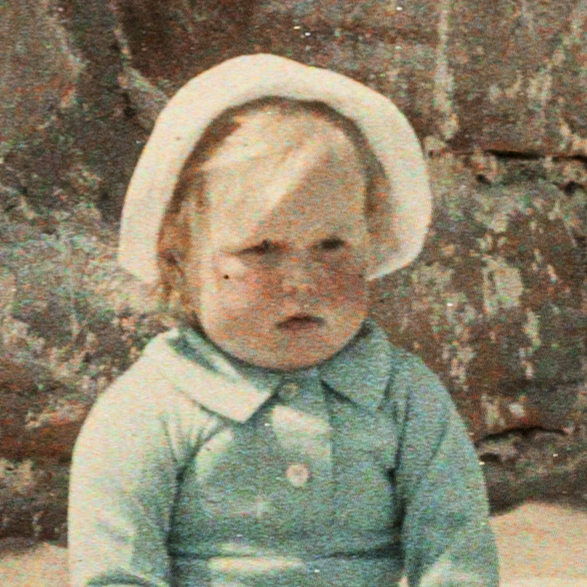
The Lumiere brothers of Lyons, France, developed the first commercially viable color photographic process, patented in 1903. Glass with an underlayer of mixed red-orange, green, and blue-violet microscropic pigmented starch granules was coated with a silver emulsion. Specific wavelengths of light were variably absorbed by the colored granules, creating a color-specific "pointillistic" silver emulsion exposure in the micro shadow of each granule. When developed and illuminated from behind, the silver layer allowed or blocked light transmission for each granule, reconstructing colors of the original exposure. c.1910, Scarbourough, UK.
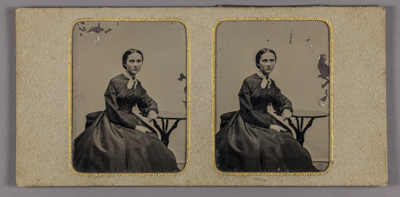
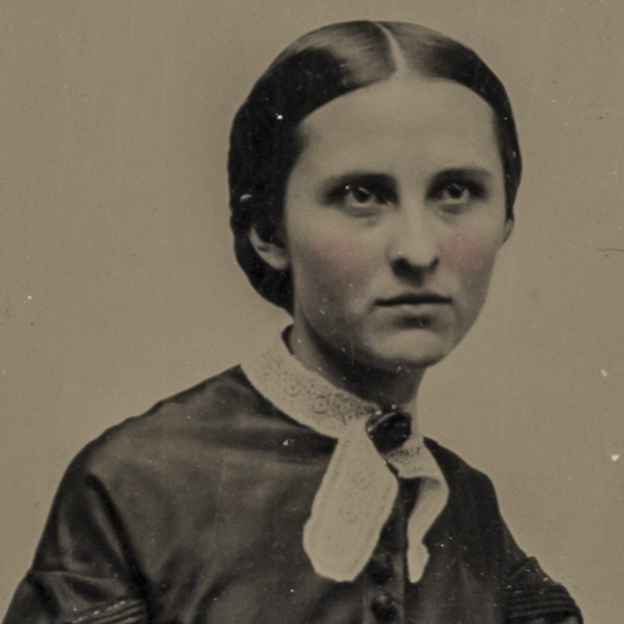
Silver halide mixed with a colloidon (guncotton disolved in ether) adhesive coats a metal surface to create a photographic plate. Exposed and developed, a positive image against the dark background was then protected with hard varnish. This portrait was undoubtedly commissioned by the sitter, Esther B. Robinson, or her family. You can see a bit of mechanical flaking of the emulsion, but these are amongst the most light-stable of all historic photographic methods, if a bit dark and soft in detail. These are quite rare as original vintage-mounted stereoviews. Unknown photographer, 1870, USA
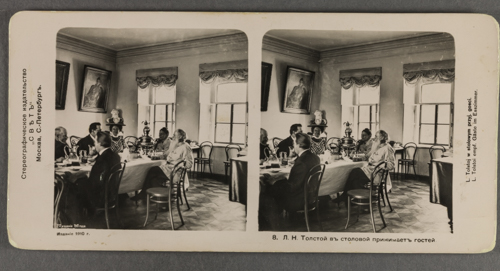

Beginning about 1900 silver bromide emulsion prints were made directly on heavy photopaper, avoiding the need to glue to a separate backing. They tended to warp over time, but are easily reflattened and usually maintain good contrast. There are many interesting historical subjects waiting to be discovered, especially in Eastern Europe and Russia where it became the dominant form. This is Leo Tolstoy dining with his wife and guests. Russian photographer of Moscow, 1910.
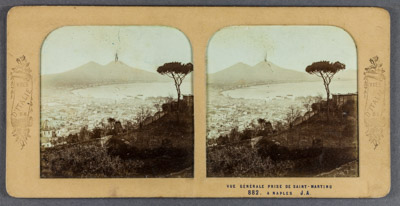
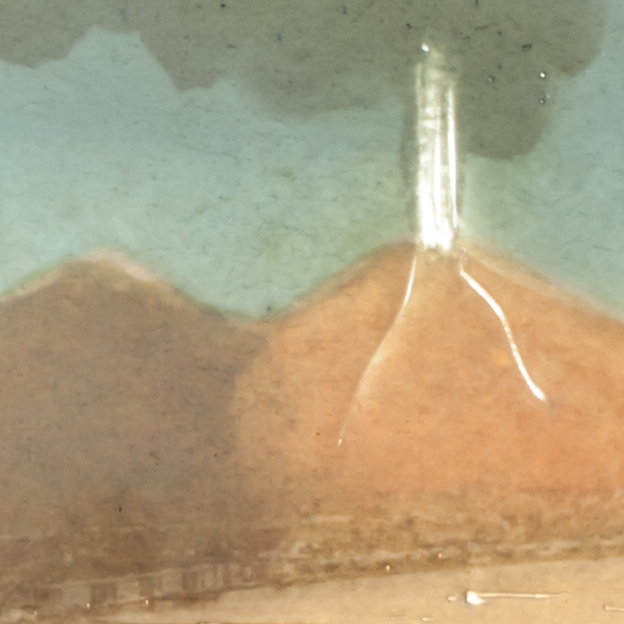
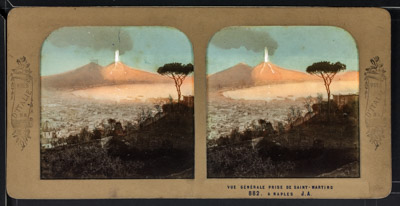
Known as French tissue views, because this is where they were first made, and were most popular. There was no true color photography before about 1903 (autochromes) so hand tinting was the next best thing. Tissue views are a special type of tinted photograph where the silver emulsion image is printed on thin tissue paper, backed by another layer of tissue paper with brushed on color corresponding to elements in the picture. When viewed under reflected light, it looks like any other photograph but when backlit diffused color tinted the image. In addition to color, surprise elements such as balloons, comets, or a moonlit sky were sometimes painted on the backing tissue. These creative special effects are especially striking and may also include pricked pinholes and slits to create points of light emphasizing jewelry, stars, fire, lit windows, or candles in the scene. This scene of Naples has a quiescent Mt Vesuvius on the horizon (top) that erupts with a fiery smoky plume when lit from behind(bottom). By Jean Andrieu, Paris, 1862-72.